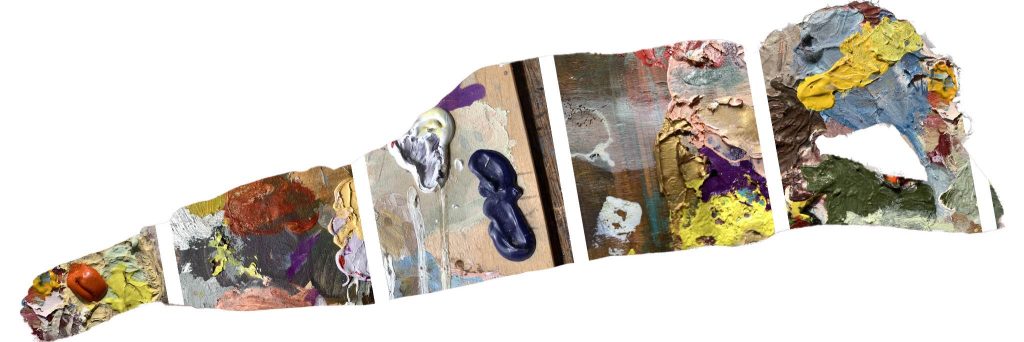Literally In1 is a multimedia assemblage of my creative arts practice and PhD research, filtered through a lived experience kaleidoscope of mental distress. It explores themes of Madness, history, and creativity, and represents the synchronized chaos that I feel as the subject, object, and researcher.
My thesis, “Footsteps and Corridors—Walking with the Asylum Gene,” stems from my lived experience of incarceration in the Ballarat Asylum as a young teen in the 1980s. It explores the historic erasure of the Ballarat Asylum that includes the demolition of most of the Asylum buildings and a normalised layer of communal forgetting.
Mad Studies is my key theoretical framework and guides both my thesis and Literally In. Mad Studies aims to focus on Mad voices, to share Mad stories and histories, to engage beyond the academy, and to disrupt sanism (Costa et al. 6). These goals have become personal values, influencing much of what I do. I take advantage of both content and form through multimodal methods to support my Mad Studies goals. For example, incorporating my visual art, “Trauma Bodies”, as a digital portal creates a coherent visual and intellectual connection to my research and to Mad histories. Due to its multimedia format, Literally In allows me to engage with audiences beyond academia, sharing stories, research, artwork, and social messaging.
The choice of audiovisual expression for Literally In, and the limited use of audio content (magpies excepted, volume up!) speaks to the silencing of history. Silences such as the demolition of the Ballarat Asylum’s buildings, the Asylum’s limited narrative history beyond government sources, the lack of memorialisation, the convenience of forgetting, and the inevitable fade of my own memories.
The gradual reveal of the typed word on the screen—without a standard voice-over—dictates the speed of the viewer’s reading. The slow-moving text names the Ballarat Asylum, while the footage simultaneously shows one of the remaining buildings. Timing implies the connection, while pace provides the time for the viewer to make the link.
The audiovisual format is familiar due to the everydayness of social media and the universal regularity of content consumption. Literally In was created using everyday tools: a smartphone, free photo/video editing applications, creativity, and an internet connection. It is bite-sized content on a mobile medium that transports globally, cheaply, instantly. Delivering Mad stories and histories with an algorithmic measure of social impact.
Literally in is the result of wayfaring2 digitally, where “the digital entangles itself in our everyday practices and movements, especially through mobile media” (Hjorth et al., 79). Together in Literally In we wander in time with the text. From frame to frame in the act of “digital wayfaring” (Hjorth et al., 79) as translations, feelings, and memories, peal in from a life bigger than research alone.
Watch the video
Notes
- Hjorth et al., inspired the naming of Literally In. Chapter 3, Speculative Encounters, describes researchers donning the costumes they were researching and said to be “literally in the research” (59). ↩︎
- “Wayfaring is the idea that knowledge is produced through the action of walking … Tim Ingold notes, wayfaring sees knowledge as produced through knowing and being in movement” (Hjorth et al., 79). ↩︎
References
Costa, Lucy, and Lori E. Ross. “Mad Studies Genealogy and Praxis.” International Mad Studies Journal edited by International Mad Studies Community. vol. 1, no. 1, January 2023. https://imsj.journals.publicknowledgeproject.org/index.php/imsj/article/view/5239.
Hjorth, Larissa, et al. Creative Practice Ethnographies. Lexington Books/Fortress Academic, 2020.
Ingold, Tim. Being Alive: Essays on Movement, Knowledge and Description. Routledge, 2022.
Kendrea Rhodes is currently undertaking doctoral research at Flinders University into the history and narratives of the Ballarat Asylum. Using an interdisciplinary approach through fields of Mad Studies, history, life-writing and visual art, she will explore how creative practice methodologies might generate social change regarding various temporal and cultural perceptions of “madness”.
